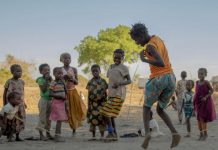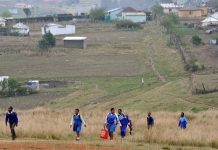Moderate Tropical Storm Chalane has strengthened slightly as it continues tracking westward over the Mozambique Channel Dec. 29.
As of 0800 CAT, the system’s center of circulation was approximately 527 km (327 miles) east of Beira, Mozambique, with the system carrying maximum sustained winds of 45 knots (85 kph, 50 mph).
Forecast models indicate the system will continue to strengthen to a Severe Tropical Storm as it tracks westward across the Mozambique Channel by late Dec. 29.
Landfall is forecast in central Mozambique, likely near Beira, early Dec. 30 as a Severe or Moderate Tropical Storm.
Following landfall, the system will rapidly weaken as it tracks inland over Zimbabwe, where it will likely dissipate over eastern Zimbabwe by late Dec. 30. Some uncertainty remains in the track and intensity forecast, and significant changes could occur in the coming days.
As of Dec. 29, at least 26 people have died in Madagascar as a result of severe flooding associated with Chalane.Government AdvisoriesAs of 0800 CAT, authorities have maintained red-level (high risk) tropical storm warnings for Sofala and Manhica provinces; orange-level (moderate risk) tropical storm warnings for Zambezia Province, and yellow-level (low risk) tropical storm warnings for Inhambane Province.
Officials in Zimbabwe have issued alerts .Authorities will likely issue new warnings or update existing advisories throughout the system’s progression in the coming days.
The possibility of localized evacuations cannot be discounted if weather conditions prove particularly hazardous.
Moderate Tropical Storm Chalane will likely bring heavy rainfall, strong winds, and rough seas to coastal areas along Mozambique, especially in parts of Inhambane, Zambezia, and Sofala provinces and eastern Zimbabwe, through at least Dec. 30.
Sustained heavy rainfall could trigger flooding in low-lying communities near streams, creeks, and rivers, as well as in urban areas with easily overwhelmed or a lack of stormwater drainage systems. Sites located downstream of large reservoirs could experience flash flooding after relatively short periods of intense rainfall. Fairly arid areas may also be subject to inundation where hard, dry soil cannot absorb rainfall.
Rain-induced landslides are possible in steeply sloped terrains. Flooding could isolate some communities for several days. Prolonged swells and storm surge generated by the system will likely result in coastal flooding as the system approaches land. Persistent onshore flow could make it difficult for the surge to recede and for water levels to decrease in coastal river catchments.
In addition to the heavy rain, flooding, and storm surge, Chalane will produce damaging wind gusts as it approaches Mozambique.
Gusts in excess of 75 knots (140 kph, 85 mph) cannot be ruled out, especially in areas near the center of circulation. Widespread and prolonged power outages due to uprooted trees and toppled utility lines are possible.
Transport
In addition to the immediate threat to personal safety, inclement weather associated with the storm could trigger localized business, transport, and utility disruptions. Floodwaters and debris flows may render some bridges, rail networks, or roadways impassable, impacting overland travel in and around affected areas. Areal flooding in urban locations could also result in severe traffic congestion, while strong winds will pose a hazard to high-profile vehicles. High winds and rough seas could prompt temporary port closures. Heavy rain and low visibility may trigger flight disruptions at regional airports.
Disruptions triggered by inclement weather and resultant hazards, such as flooding, could persist well after conditions have improved. If there is severe damage to infrastructure, repair or reconstruction efforts may exacerbate residual disruptions.
Advice
Activate contingency plans in areas where officials forecast tropical storm conditions.
Heed all evacuation orders.
Use extreme caution in low-lying coastal areas and near streams, creeks, and other waterways due to the high potential for severe flooding and storm surge.
Stockpile water, batteries, and other essentials in advance. Charge battery-powered devices when electricity is available; restrict the use of cellular phones to emergencies only.
Power down mobile devices when not in use. Keep important documents in waterproof containers.
Observe strict food and water precautions, as municipalities could issue boil-water advisories following flooding events.
Take precautions against insect- and waterborne diseases in the coming weeks. Keep any necessary medications in a waterproof container.
Plan accordingly for commercial, transport, and logistics disruptions in areas in the path of the storm, especially if vital infrastructure is damaged. Seek updated information on road conditions before driving or routing shipments through areas where flooding has occurred.
Confirm flights before checking out of hotels or driving to the airport; clearing passenger backlogs may take several days in some locations.
Source: Garda













